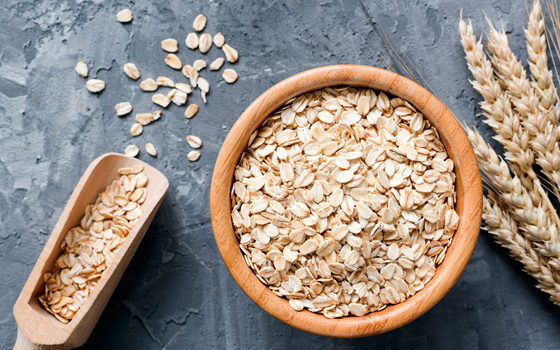Instant, quick, steel-cut, old-fashioned…it’s no wonder you may get a little confused by all the different types of oats available on the market. Nonetheless, this grain has been part of our mainstream diet since the end of the 19th century, filling the bowls of thousands of Quebecers each morning for breakfast.
Before introducing the various types of oats, here’s a brief overview of the nutritional benefits of this delicious grain. First of all, it’s an excellent source of phosphorus, magnesium and fibre, particularly soluble fibre. Regular use can help reduce the risk of cardiovascular disease and type 2 diabetes. Oats essentially contain no gluten; however, due to widespread contamination during cultivation and processing, they are not recommended for people with celiac disease, unless they are certified pure gluten-free oats.
Here are the different types of oats offered on the market, from least to most processed versions.
Steel cut oats
These oats are also called pinhead, Irish oats, Scottish oats or whole oat groats. Regardless of their name, they are the least processed on the market. Whole oat groats are cut into smaller pieces, usually one or two. These cut oats obviously require longer cooking times than other types of oats. One cup (200 g) of oats mixed with 2¼ cups of water will take about one hour to cook. The result, however, is well worth the time: a delicious nutty taste with a bit of a crunch for a wholesome and filling dish. Cut oats can replace oat flakes in your morning oatmeal, but feel free to use them instead of rice, pasta or barley in soups and meal salads. Cook a large batch ahead of time so you have some ready when you’re in a rush!
Regular oats
Also called old-fashioned oats, these are the large oat flakes usually used to make home-made granola and muesli. Once harvested, the oat groats are cleaned, steamed and crushed by a flaker and then dried. To cook, bring two parts water for one part flakes to a boil and reduce to low heat for 10 to 15 minutes.
Quick oats
For this type of oat, the oat groat is cut into small pieces, steam cooked, and flattened like regular oats. The flakes are smaller and quicker to cook. Generally speaking, one part quick oats mixed with two parts water take 2 to 3 minutes in the microwave or 3 to 5 minutes on the stovetop over low heat. If you’re in a rush in the morning, quick oats make an excellent choice.
Instant oats
This type is completely precooked in addition to all the steps mentioned above. This is why these oats are so quick to cook, since all you need to do is rehydrate the product before eating. However, all the manufacturing steps significantly reduce nutritional value. These oats are usually found in flavoured oatmeal pouches. Instant oatmeal can be very convenient when outside the house, since all you need to do is add hot water; however, check the ingredient list since some instant oatmeal contains large quantities of salt, added sugar, flavours, colouring and other less nutritious ingredients.
Virginie Lamontagne, Dietician at Rachelle Béry

